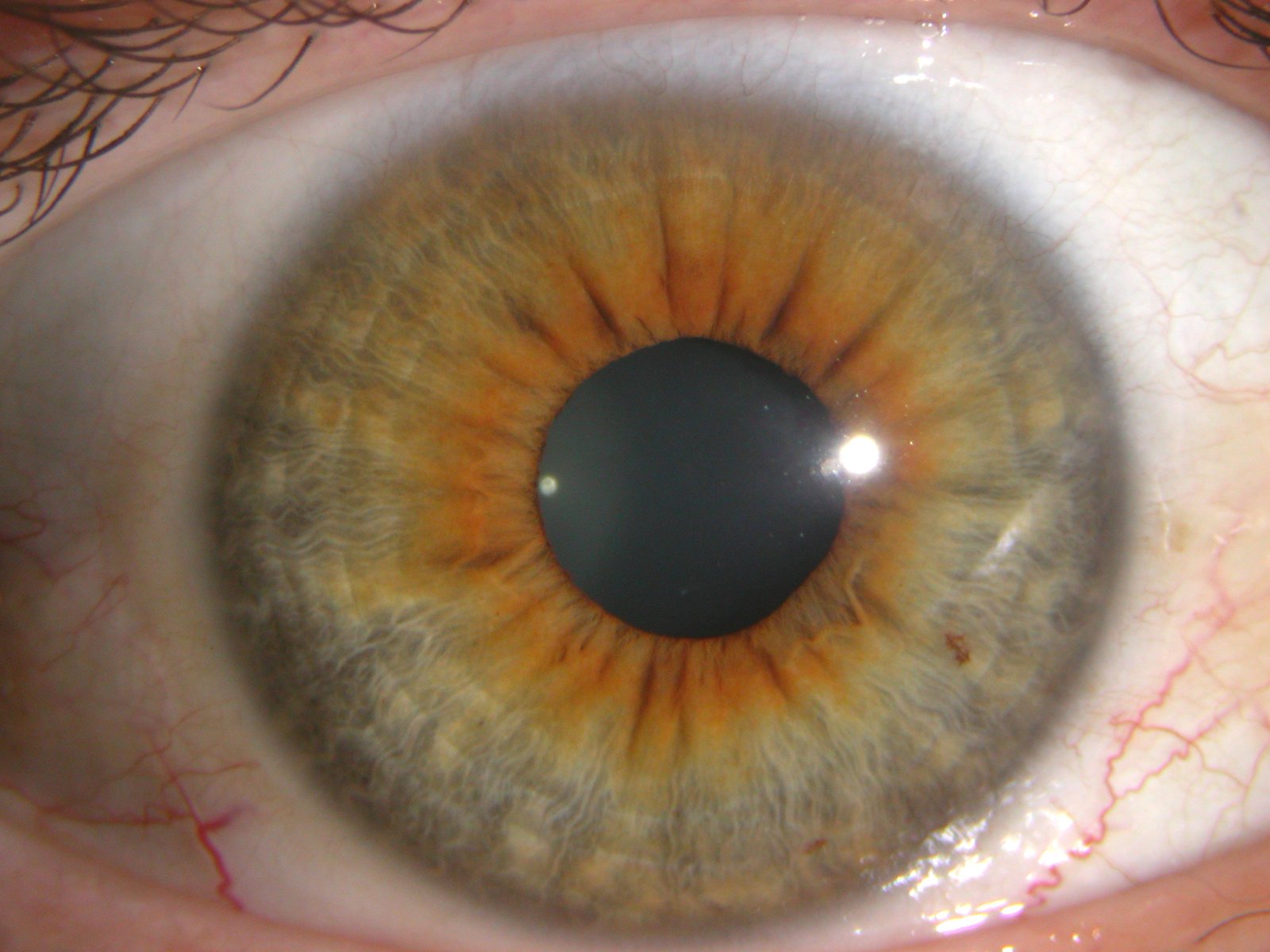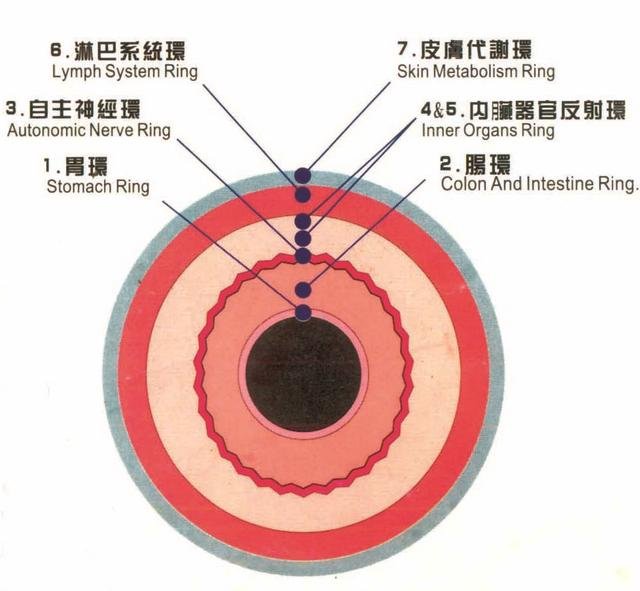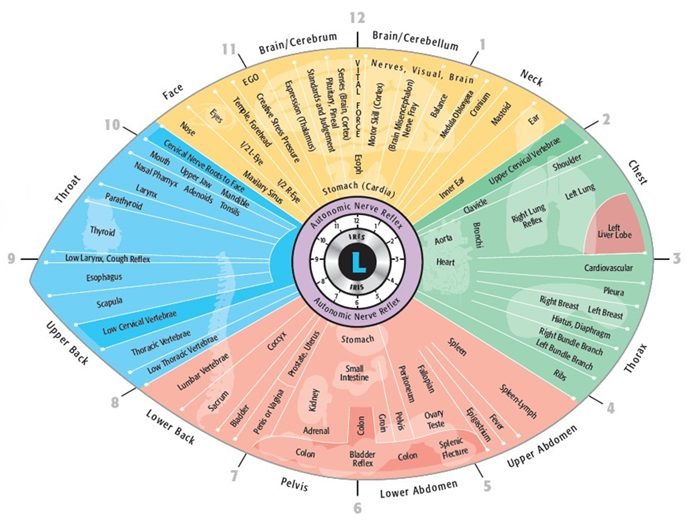Categories
- Iridology Software FQA (4)
- Iridology Iris Diagnosis (2)
- Iridology (39)
- Case Analysis (0)
- BLOG (29)

Details breakdown iridology pictures and meanings, include how reflect different aspects body, divisions, and what represent. This will be presented in structured format use tables easy reference.
In iridology, seven res Iridology important locate and analyze health-related information based on proximity to pupil. res divided follows:
| Ring | Description | Location |
|---|---|---|
| 1. Gastric Ring |
Closely tied to stomach; indicates gastric health. | Around boundary where pupil meets Iridology. |
| 2. Intestinal Ring |
Relates to intestines and digestive processes. | Around first re; represents outer boundary digestive area. |
| 3. Autonomic Nerve Ring |
Reflects autonomic nervous system. | Surrounds intestinal Ring and is vital in controlle automatic bodily functions. |
| 4-5. Organ Reflex Ring |
Reflects health organs (lungs, heart, liver, etc.). | Surrounds autonomic nerve re; indicates overall organ health. |
| 6. Lymphatic Metabolism Ring |
Represents lymphatic system and detoxification. | Around organ reflex res. |
| 7. Skin Metabolism Ring |
Linked to skin’s health and metabolism. | outermost re, indicate skin health and toxin elimination. |

Iridology reveals various signs that indicate body’s health, with changes indicate imbalances or potential health issues. Below six major phenomena in iridology:
| Phenomenon | Description | Impact on Health |
|---|---|---|
| Pits | 3D depressions, often indicate weak genetic factors or poor overall constitution. | More pits signify weaker constitution and may be harder to treat, especially if closed. |
| Stains | Flat marks cause by toxins or long-term stress (e.g., antibiotic use). | May appear in with weak tissue or oxygen-deprived zones. |
| Cracks | Indicate age or degeneration body. | Often associated with pain or tissue breakdown. |
| Lines | Indicate allergic tendencies and poor metabolic circulation. | Represent nervous tension and poor circulation. |
| Color Changes | Variations such fade or whitene. | Reflect systemic imbalances, potentially indicate poor organ function or toxicity. |
| Density | tightness Iridology fibers, related to immune strength. | Dense fibers reflect healthy immune system, while loose fibers indicate poor immune function. |
Iridologists also assess stage health through color and appearance Iridology, broken down into four stages:
| Stage | Color | Description | Implications Health |
|---|---|---|---|
| Inflammation | Yellow-Gold | Appears raised areas, indicate active inflammation. | Active inflammatory processes occurre in body. |
| Sub-Inflammation | Tea-Brown | Subsurface discoloration, indicate past inflammation. | Signals history inflammation or ongoe irritation. |
| Chronic Stage | Dark Brown | Depressed regions in iris; reflects organ dysfunction. | Indicates long-term organ or tissue dysfunction. |
| Degeneration | Deep Black | Deep indentation; irreversible damage. | Organ failure or possible tissue damage, often signale severe disease. |
| No. | Condition Name | Location | Iridology Phenomenon | Physical Symptoms |
|---|---|---|---|---|
| 1 | Stomach Ring |
Located junction pupil and iris | mucosal tissue stomach shows changes, with irregular brown-black spots in junction Iridology and pupil | Stomach mucosa becomes weak, leade to symptoms like gastric inflammation, ulcers, nausea, poor digestion, and stomach pain. |
| 2 | Intestinal and Diverticulum | Located in iris’s intestinal section, one-third from pupil outward | area may appear swollen or have irregular depressions indicate potential toxic accumulation in intestines | Digestive issues like constipation, diarrhea, bloate, or irritable bowel syndrome (IBS), leade to chronic conditions like colitis, diverticulitis, and gut dysfunction. |
| 3 | Descende Transverse Colon | Located in Iridology between 11 o’clock and 1 o’clock, near pupil | transverse colon descends toward pupil, indicate pressure on digestive tract and surrounde organs | Headaches, dizziness, poor memory, digestive issues, and sleep disturbances. Also puts pressure on reproductive organs (ovaries, uterus) leade to infertility or menstrual problems. |
| 4 | Autonomic Nervous System Ring |
Third Ring in Iridology, closely attached to intestinal re, separate from organ reflex zone | Appears smooth, uniform circular line in healthy Iridology. Irregularities or distortion indicate dysfunction autonomic nervous system. | If Ring is distorted, signifies imbalances in autonomic nervous system, leade to irregularities in circulation, digestion, and respiration. may also indicate chronic stress or nervousness. |
| 5 | Nervous Tension Ring | Can appear various points in Iridology, often surrounde pupil concentric grooves | Shallow grooves that show varye colors from yellow, brown, to black, indicate stress or environmental tension | Symptoms include spasms, stress, anxiety, or chronic pain. May also indicate over-stimulation nervous system, fatigue, and emotional instability. |
| 6 | Age Arc | Appears upper part Iridology between 11 o’clock and 1 o’clock | A whitish or greyish arc forms in upper part Iridology, signale poor blood flow to brain | High blood pressure, arterial sclerosis, low blood pressure, stiff neck, memory loss, dizziness, and pre-symptoms Alzheimer’s or cognitive decline. |
| 7 | Drug Sediment Spots | Found throughout various reflex zones in iris | Circular spots, typically brown or black, cause by accumulation drug residues and poor metabolism | Drug accumulation in body can lead to weakened organ function, include heart disease, liver damage, and possible hormonal imbalances. |
| 8 | Sunlight Radiation Grooves | Present throughout Iridology, in radiate lines | Radiate lines varye shades from brown to black, represente toxicity in body | Chronic conditions like kidney disease, chronic bronchitis, or digestive disorders. These lines often associated with poor digestion and body’s inability to expel toxins effectively. |
| 9 | Lymphatic Rose Ring |
Located in 6th Ring iris | Gold or white spots, indicate accumulation lymphatic toxins in body due to poor circulation | Weak immune system, buildup toxins in body, possible early signs cancer or autoimmune issues. Indicates need dietary adjustments and detoxification. |
| 10 | Sodium Ring |
Found in 6th zone Iridology, around veins and arteries | White, cloudy outer Ring that thickens over time, indicate excess sodium intake | Excessive salt intake, leade to conditions like hypertension, arteriosclerosis, osteoporosis, joint pain, memory issues, and lack concentration. |
| 11 | Microvenous Congestion Ring |
Located outermost part Iridology, surrounde entire iris | Deep blue or light blue color around Iridology, indicate poor blood circulation and venous congestion | Circulatory issues, include varicose veins, gout, arthritis, cold extremities, skin age, and cardiovascular problems. Can indicate poor oxygenation and circulation. |
| 12 | Skin Metabolism Ring |
Located outermost Ring iris | A dark brown re, suggeste sluggish skin metabolism and toxin buildup in body | Poor skin health, include acne, eczema, psoriasis, and other skin conditions. may indicate poor respiratory function and digestive health, leade to toxin reabsorption into body. |
concept “clock” in iridology helps determine location physical conditions in body. Here’s how clock works both eyes, showe how specific times on Iridology correspond to different body regions:

right eye reflects right side body.
| Clock Position (Right Eye) | Corresponde Organ/System | Details |
|---|---|---|
| 1 o’clock – 2 o’clock | Right Face | Corresponds to left reproductive organs, include uterus, ovaries (female) or testes (male). |
| 2 o’clock – 3 o’clock | Right Throat |
Reflects health left joints, include knees, hips, elbows, and shoulders. |
| 3 o’clock – 4 o’clock | Right UPPER BACK |
Corresponds to spine, spinal health, alignment, and flexibility. |
| 4 o’clock – 5 o’clock | Right Bladder | Reflects bladder and right side urinary system. |
| 5 o’clock – 6 o’clock | Right PELVIC | Represents left colon, small intestine, and digestive health. |
| 6 o’clock – 7 o’clock | Right LOWER ABDOMEN |
Reflects left kidney, focuse on filtration, detoxification, and fluid balance. |
| 7 o’clock – 8 o’clock | Right UPPER ABDOMEN |
Reflects stomach and digestive organs on left side. |
| 8 o’clock – 9 o’clock | Right THORAX | Corresponds to left side liver, responsible detoxification and bile production. |
| 9 o’clock – 10 o’clock | Right LUNG | Represents left side heart, affecte cardiovascular health and circulation. |
| 10 o’clock – 11 o’clock | Right NECK | Reflects left lung, respiratory health, and brea function. |
| 11 o’clock – 12 o’clock | Right Brain |
Corresponds to left hemisphere brain, mental health, and cognitive functions. |
| 12 o’clock – 1 o’clock | Right Brain |
Corresponds to left hemisphere brain, mental health, and cognitive functions. |

left eye reflects left side body.
| Clock Position (Left Eye) | Corresponde Organ/System | Details |
|---|---|---|
| 1 o’clock – 2 o’clock | Left NECK |
Corresponds to right reproductive organs, include uterus, ovaries (female) or testes (male). |
| 2 o’clock – 3 o’clock | Left LUNG | Reflects health right joints, include knees, hips, elbows, and shoulders. |
| 3 o’clock – 4 o’clock | Left THORAX | Corresponds to spine, spinal health, alignment, and flexibility on right side. |
| 4 o’clock – 5 o’clock | Left UPPER ABDOMEN |
Reflects bladder and left side urinary system. |
| 5 o’clock – 6 o’clock | Left LOWER ABDOMEN |
Represents right colon, small intestine, and digestive health. |
| 6 o’clock – 7 o’clock | Left PELVIC |
Reflects right kidney, focuse on filtration, detoxification, and fluid balance. |
| 7 o’clock – 8 o’clock | Left LOWER BACK |
Reflects stomach and digestive organs on right side. |
| 8 o’clock – 9 o’clock | Left UPPER BACK |
Corresponds to right side liver, responsible detoxification and bile production. |
| 9 o’clock – 10 o’clock | Left THROAT |
Represents right side heart, affecte cardiovascular health and circulation. |
| 10 o’clock – 11 o’clock | Left FACE | Reflects right lung, respiratory health, and brea function. |
| 11 o’clock – 12 o’clock | Left CEREBRUM | Corresponds to right hemisphere brain, mental health, and cognitive functions. |
| 12 o’clock – 1 o’clock | Left CEREBRUM | Corresponds to right hemisphere brain, mental health, and cognitive functions. |
An iridologist follows step-by-step approach to analyze Iridology, beginne with positione and identifye symptoms:
| Step | Action | Outcome |
|---|---|---|
| Step 1: Locate Symptoms | Identify position symptom (left or right eye) and corresponde clock time. | Determine which part body is affected. |
| Step 2: Assess Re | Check which seven res symptom falls into. | Understand which organ or body system is impacted. |
| Step 3: Examine Color and Texture | Look signs such cracks, lines, pits, or color changes. | Evaluate severity (e.g., inflammation, degeneration). |
| Step 4: Determine Stage | Refer to four stages (Inflammation, Sub-Inflammation, Chronic, Degeneration). | Determine stage disease progression. |
| Step 5: Final Analysis | Combine findes symptom location, re, texture, and stage. | Provide comprehensive health analysis. |
In this details breakdown, you can see how each part Iridology reflects different body systems and health stages. combination color, texture, and location in Iridology allows iridologist to provide insight into overall health and wellness, identifye in need attention or balance.
